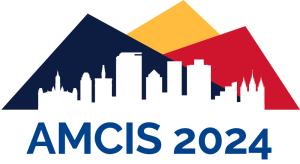Loading...
Abstract
Developments that have led to the assertion that ‘technology is a double-edged sword’ emanated from the intended (positive) and unintended (negative) consequences of its adoption. The emergence and proliferation of technology, coupled with its attendant effects across industries, have been viewed and assessed by several Information Systems (IS) researchers and practitioners as paradoxical. Remarkably, industries such as the healthcare industry, which is deemed critical, are also noted from extant literature to be experiencing deep cuts from technology’s ‘double-edged sword. For instance, while a large section of the IS healthcare literature (e.g. Tan and Ong 2022) has been successful in advocating and documenting the intended benefits and inherent opportunities that underlie technology adoption in the healthcare industry (bright side of IT in healthcare), there is also a growing section of the literature (e.g. Preko et al. 2022; Coiera et al. 2016) that propagates the rather unintended and negative consequences of technology in the same industry (dark side of IT in healthcare). These opposing and contrasting perspectives in the literature continue to deepen our holistic understanding of the impact of technology on the healthcare industry. This paper, thus focuses on the dark side of technology in the healthcare industry. Specifically, the paper seeks to explore this dark side of technology in the area of diagnosis, which has been a critical part of the healthcare administration process but is gradually losing its value amidst the Fourth Industrial Revolution (4IR). Clinical diagnosis, which used to be the preserve of medical practitioners, is currently viewed as an everyday adventure for the ordinary non-clinical person seeking to gain medical relief momentarily or in the long term. This critical and life-threatening phenomenon has emerged and continues to gain roots in the current age due to the proliferation of digital technologies and the internet. ‘Googling to diagnose’ has become a new phenomenon among various age groups requiring one clinical diagnosis or the other. Some studies have pointed to the underpinning factors being the proliferation of digital platforms that provide users with healthcare information, high costs of medical care especially for persons without health insurance, and the increasing healthcare needs of migrant and vulnerable populations. While the foregoing has been considered uncomfortable and disturbing, its theoretical and practical impacts have not been assessed in extant literature. Consequently, an opportunity exists for the current study to fill this gap in literature and contribute to theory, policy, and practice. This study, therefore, proposes a framework based on the cognitive theory and the DeLone and McLean IS Success Model, to understand the psychological aspects of the phenomenon and its net impact on the healthcare industry as a whole. The study adopts an exploratory qualitative approach to unearth its findings, which has implications for the IS healthcare literature, theory, policy, and practice.
Paper Number
tpp1396
Recommended Citation
Preko, Mansah, "‘Googling to Diagnose’ – Exploring the Dark Side of Technology in the Healthcare Industry" (2024). AMCIS 2024 TREOs. 151.
https://aisel.aisnet.org/treos_amcis2024/151
When commenting on articles, please be friendly, welcoming, respectful and abide by the AIS eLibrary Discussion Thread Code of Conduct posted here.


